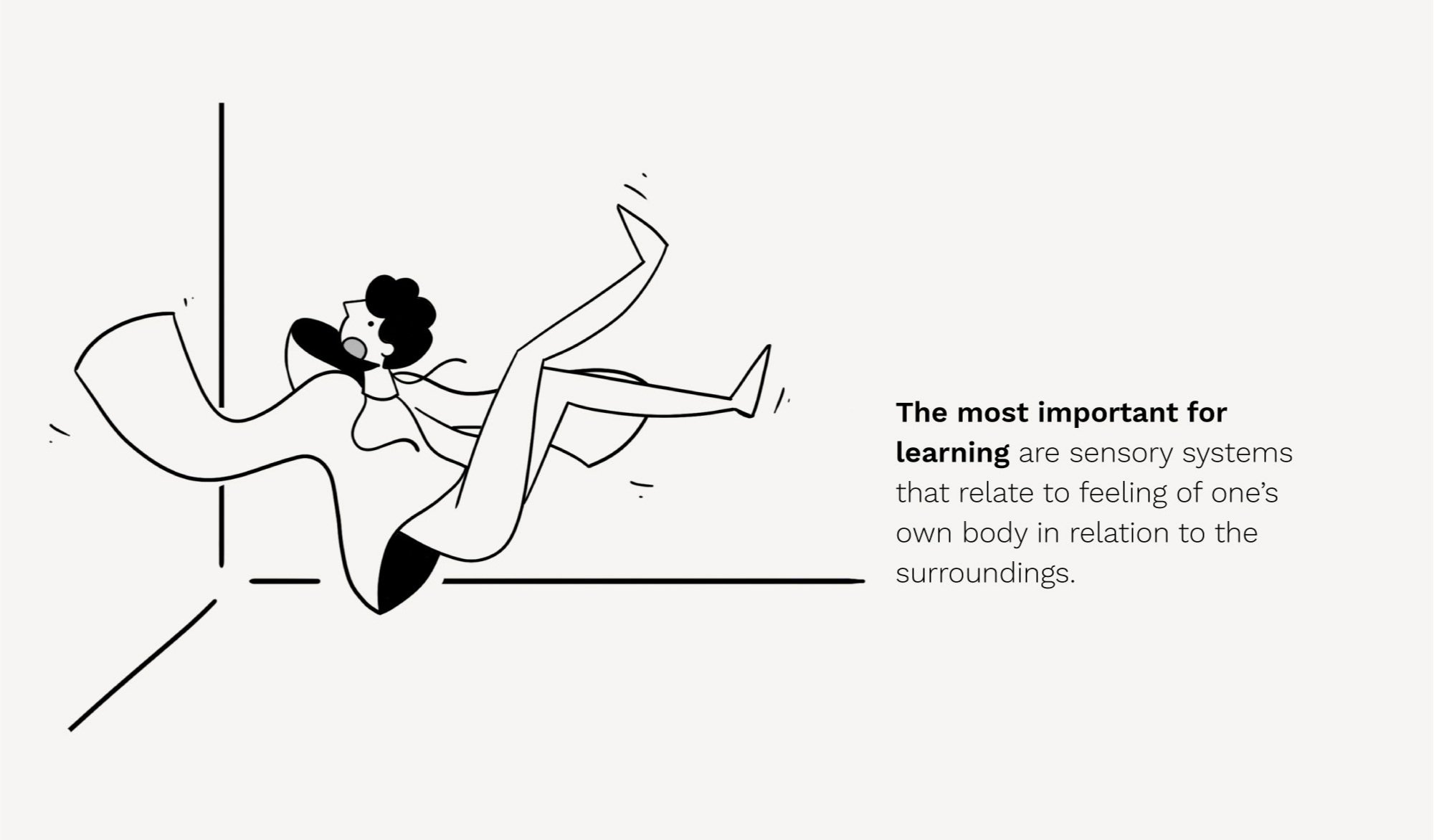How to support children’s learning process and their emotional calm?
6 minutes read | Rethinking kids’ design series, Pt. 3 | Written by Dorja Benussi
I truly believe that the sensory approach to parenting and design should be mainstream; too bad it sounds so medical and complicated when the implementation is so simple. Let’s take a closer look at the concept of sensory integration. How does the supportive environment feel like?
Thus, physical experiences are an integral part of the learning process of all children. A child's environment that is static is an environment that works against the child. In contrast, sensory-rich spaces provide the food that a child's brain needs; this is what matters most. Once we are aware of how critical a child's environment is for their brain development we should do everything in our power to ensure these environments include, and promote, physical activity and interaction.
As we move away from static surroundings, design has to be adaptable: flexibility, variability and the dynamics of objects used by the child come to the fore. This is important because it encourages the development of emotional self-regulation. It encourages the child to understand the emotional-physiological reaction in his body and to adjust his attitude towards himself, emotion or the environment. It helps them adjust and adapt to their environment, which is a direct support to the regulation of one's own nervous system. When a child can regulate their nervous system, they feel grounded, calm, and confident, whether they are playing or learning. In addition to understanding themselves and regulating their own emotions, these are one of the most important life skills in adulthood - they also directly affect focus, memory and learning skills.
Photo by Caroline Hernandez
Sensory integration is important in all aspects of life; if it is good, it means that we are balanced and that we feel calm in our bodies
Sensory integration is a mechanism in which our brain receives and processes sensory information from the environment and our own body. It involves a whole range of processes that serve as building blocks for growth, development and overall learning.
Different parts of our body (such as skin, eyes, and ears) receive information from our environment and then transmit it to the brain. The brain interprets and compares the information it receives, comparing it to the information stored in our memory, and then uses that data to direct our body’s response to its environment. Sensory integration is important in all aspects of life; if it is good, it means that we are balanced and that we feel calm in our bodies.
In addition to the five, distinct senses (seeing, hearing, taste, smell, and touch), there are three very important senses; proprioception (external consciousness), vestibular perception (spatial orientation) and interception (internal consciousness). Ayres (who defined SI theory) focused on the senses she considered most important for feelings of well-being, concentration, self-confidence, as well as emotional regulation and academic skills. These are the vestibular, proprioceptive, tactile, visual and auditory systems.
The most important ones for learning are the first three concerning the feeling of one’s own body in relation to the physical space in which it is located.
How can we create supportive children’s spaces ourselves?
One should start from the understanding that every child is different. Not only in a way that it is different from other children, but also in the idea that a supportive environment for a child may change from day to day. Creating an environment in which a child can develop better requires that we first understand the child’s needs in the context of their interaction with the environment.
For example, children often fidget because their nervous systems are regulated by movement. This way they process what they feel and can focus more easily. On the other hand, for children who seem overwhelmed or sensitive, isolation and soothing stimulation can help them calm down and redirect.
There are four main patterns by which we can understand the different ways of sensory processing. They are divided according to the neurological threshold and whether the child is active or passive in relation to how they feel. These categories are not fixed. Some children may clearly fall into one of the categories, while others will feel and behave differently depending on some other emotional factors. This is also the reason why flexibility and adaptability must be taken into account when talking about a child-friendly supportive environment.
“Getting squirming, distractible children to sit still and pay attention is rarely easy, and there’s a good reason for that. Kids’ developing brains have a lot to process, and on top of that, they’re all completely different. Stimuli like light, sound, touch, and the movement of their own bodies affect the way they’re thinking and feeling, and they’re still learning how to make sense of all that input. While we as adults have tried to suppress these natural instincts in the past, it turns out that giving kids more freedom to fidget or withdraw actually helps them concentrate & feel better, especially when learning difficulties or disabilities like autism or ADHD factor into the equation.” —Dornob about Tink Things
Sensory methodology has a classic problem-solving approach whose premise is to understand sensory integration in children. Principles such as rocking, rotation, jumping, tactile memory and discrimination and the like are something that can be directly taken from medical theory and applied to interior design or children’s activities.
Written by
Dorja Benussi
Co-founder of Tink Things and Benussi&theFish
Designer & creative director, mom, dancer, overthinker, peace pursuer







